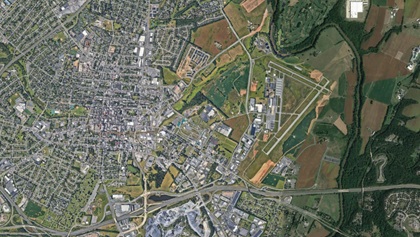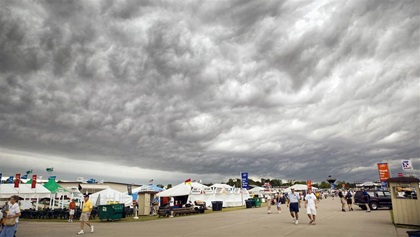Hey, ho, let's go
Cross-country strategies for VFR pilots

Those statements are true for the most part, although it’s worth noting that many an instrument-rated pilot has had to cancel a trip because of weather. Still, statements like these could lead you to believe that you, “just a VFR pilot,” are consigned to pattern work and the occasional hop to the next town over. Those statements are not a complete picture of visual flight rules flying. You can go places as a VFR pilot. You are not tethered to the traffic pattern of your home airport. You can go 100 nautical miles or 500 nm; you can go to the beach, or to the mountains, or to a fly-in that’s long been on your bucket list. Making these trips requires some extra planning, flexibility, and more flexibility. And an extra helping of flexibility.
Flexible flier
My mantra is, “If I have to be somewhere, I let the professionals take me.” I’ll buy an airline ticket if I am slated to attend a business function; a family vacation where travel connections are involved; or any situation in which my presence is a requirement and/or expectation. I do not want any outside influences on my go/no-go decision.
Conversely, traveling VFR requires a willingness to change a departure time or date, a destination, and a route at any point in a trip. And the same thing holds for the return leg of the trip. It has to be OK not to launch on that planned departure day—it’s OK to wait out the weather, the winds, or perhaps your own mindset.
This may seem counterintuitive to what you are taught during the cross-country phase of flight training: Plan the flight, and fly the plan. It’s not, really. Pilots frequently tweak plans to keep safe. Too much crosswind at one airport? You won’t land there; you’ll look for an airport with a runway that’s more closely aligned with the prevailing winds. Unforecast headwinds? OK, you’ll land short of your destination to take on more fuel, if you need to (“Hope Is Not a Strategy,” p. 34).
Throw a dart
Some pilots want to go places—but they aren’t sure where they want to go. Draw a 100-nm circle around your airport and see what’s out there. At least one of the airports on that radius is likely to have a good airport restaurant. AOPA’s online airport directory (aopa.org/destinations) can help you search for nearby activities such as hiking, boating, museums, golf, and more. The airport directory is a great flight planning tool because it includes frequently updated information on fixed base operator fuel prices; runway lengths and conditions; communications frequencies; operating procedures; and noise abatement procedures (see “All Available Information,” below).
Some pilots know exactly where they want to go, but the idea of flying more than one state—or two, or three—from their home airport is intimidating.
“A long cross-country is just a series of shorter cross-countries,” said Kansas Master CFI Thomas P. Turner. “Don’t be overwhelmed by a long trip; just plan and execute a series of shorter trips, updating the plan at each stop.”
That was a winning strategy for Jody J. Patterson, who recalled flying from Moab, Utah, to Orlando, Florida, as a relatively new pilot. “My friendly neighborhood CFIs just advised me to plan it like I was flying from one airport to another,” he said. “Worked like a charm and relaxed many of my anxieties.”
Weather wisdom
Weather is the primary driver behind your need to be flexible. At the beginning of your pilot journey, your weather minimums are lower and your understanding of forecasts is still developing. Without a basic understanding of weather patterns and forecasts, on longer trips it is difficult to know what kind of weather could be waiting for you at your destination. Or, you lack practical experience of correlating weather theory with forecasts.
Gold Seal CFI Russell Still recommends improving your understanding of weather reporting and forecasting. Many pilots will start looking at the weather seven to 10 days out, but if you like to do this, remember: You’re going to be flexible. As the days wind down to your planned departure, if conditions don’t look like they’re going to align with your minimums, you will consider departing a day in advance or a day later.
“I used to obsess about weather when I was a week out from my planned departure date,” said Georgia pilot Karen Atkins. “Now I look 24 to 48 hours ahead, and check again two to three hours prior, with an abbreviated briefing just before taking off.”
With enough time and fuel, you can skirt weather you don’t want to cozy up to, Atkins said. This is especially true in the summer, when thunderstorms can dictate much of a VFR pilot’s flying activity. Calling 122.2 MHz while you’re in the air will put you in touch with a flight service specialist who can help you determine whether a line of thunderstorms along your route can be avoided by diverting in another direction. Remember that datalinked weather radar from ADS-B or satellites, while helpful, can provide delayed reporting, so don’t try to thread the needle between two storms. Give thunderstorms the wide berth they command—20 nm is a good buffer zone between your airplane and lightning, hail, updrafts, downdrafts, and heavy precipitation.
You can go 100 nautical miles or 500 nm; you can go to the beach, or to the mountains, or to a fly-in that’s long been on your bucket list. Making these trips requires some extra planning, flexibility, and more flexibility. And an extra helping of flexibility.EAA AirVenture usually takes place in late July in Oshkosh, Wisconsin—a time of the year when storm systems can run rampant from the Midwest to the Northeast and encircle much of the South, as well. AirVenture might be a can’t-miss event, but the weather gods may hoot at you if you assume you’ll be able to depart on a specific day or time. (The 2020 event was canceled because of the COVID-19 pandemic.)
In 2018, for example, a line of storms forced two pilots from Maryland to fly as far south as Nashville, Tennessee, to get around a line of storms over the Appalachians; eventually the pilots got back on course and made it to Wisconsin for a week of camping at AirVenture. “It was a great adventure,” one of the pilots said afterwards. “We were going for the experience. It didn’t really matter how long it took to get there.” Now that is a healthy mindset for any VFR pilot.





